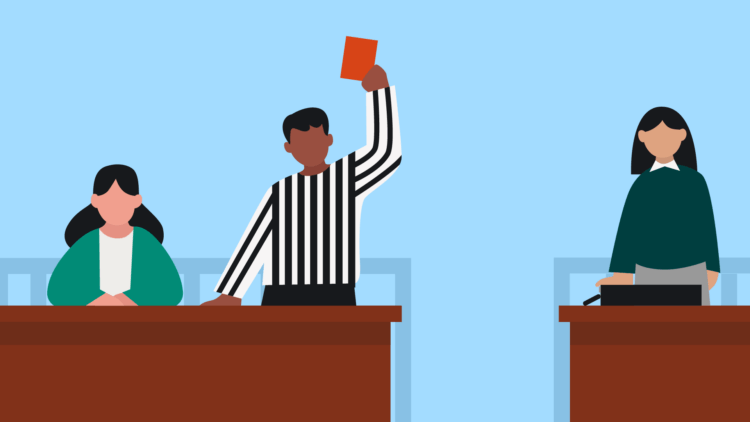You can’t master contract law until you know the essentials of indemnity clauses. The indemnity clause is a vital element in many agreements, especially commercial contracts. By helping allocate risk among the contracting parties, these clauses provide more equity and risk avoidance to the contracting process.
Here we will cover the definition of an indemnity clause, its benefits, different types of indemnity clauses, and other background facts that legal professionals should understand.
An indemnity clause is a contractual clause providing that one party is responsible for any losses or damages arising from a certain event or set of circumstances. In effect, the indemnity clause shifts the risk of that event occurring from the indemnified party to the indemnifying party.
What is an indemnity clause?
Benefits of an indemnity clause

The primary benefit of an indemnity clause may be that the parties enter into a contract in the first place. The purpose of a contract is to clarify obligations and responsibilities while reducing risk. When the parties know who will be responsible for an event such as a third-party lawsuit or an injury caused by a product or service, it makes them more likely to enter into the agreement. This clarity also strengthens the business relationship between the parties.
Indemnity clauses also provide different benefits to the parties. Here some definitions are in order: The specific event or circumstance triggering indemnification is the “indemnification event” or “trigger event.”
The indemnifying party is the party agreeing to take responsibility for the indemnification event.
The indemnified party is the party being relieved of that responsibility.
For the indemnified party, the benefits are clear: The indemnity clause protects them from losses if a certain event occurs, which is especially important when that event is not the fault of the indemnified party.
Examples include:
- A general contractor being sued for a subcontractor’s faulty construction.
- A distributor being sued for a manufacturer’s defective product.
Even if the indemnifying event is only a remote possibility, the indemnified party is protecting themselves against worst-case scenarios.
The indemnifying party also benefits from an indemnity clause, in the sense that the other party is better incentivized to enter into a contractual relationship with them. In addition, if Party A indemnifies Party B for one type of event, this may be used as leverage for Party B to agree to indemnify Party A for another type of event. When both parties agree to indemnify each other with a mutual indemnity clause, as covered below, this is a clear example of indemnity working to the advantage of both parties.
Types of indemnity clauses
There are different types of indemnity clauses, with different stipulations for each. Below we’ve outlined what different indemnity clauses could look like, with examples for a contractor entering a construction contract.
Bare indemnity
A bare indemnity clause provides blanket protections against loss or liability for the indemnification event, without limits. The indemnifying party must be extremely careful about entering into a bare indemnity arrangement. The downside risk could prove to be far too high. For example, there would be no limit to the amount a contractor could owe the owner for an indemnification event under a bare indemnity clause.
Limited indemnity
Limited indemnity refers to a contractual arrangement where, unlike bare indemnity, there is some limit to the amount of losses that will be covered. A limited indemnity clause gives more downside risk protection to the indemnifying party.
This term may also refer to a limited form or limited liability indemnity clause. In these cases, the indemnifying party is only liable for damages caused by their own negligence.
Using the construction contractor example, the contractor would agree to indemnify the owner for damages arising from the contractor’s own fault, but not damages arising from a person or event outside the contractor’s control. Here the contractor would be liable for property damage caused by their work on the house. However, they would not be liable for a third party driving their car through the owner’s fence surrounding the construction site.
Third-party indemnity
A third-party indemnity clause aims to indemnify against damages and expenses arising from claims by third parties, as opposed to losses caused by one of the contracting parties. These claims generally arise in the form of third-party lawsuits, such as the contractor being sued for a construction defect arising from the work of a prior contractor hired by the owner.
Mutual indemnity
A mutual indemnification clause is a contractual provision where both parties agree to cover each other for damages or losses resulting from their own actions or breaches of the contract.
A primary example is a contract providing that each party shall indemnify the other parties for losses caused by their own breach of contract. An owner and contractor in a construction contract would also often seek mutual indemnity for construction defects or other damages. Accordingly, the owner would need to indemnify the contractor for lawsuits arising from the owner’s negligence, and the contractor would need to indemnify the owner for lawsuits arising from the contractor’s negligence.
Special note: implied indemnity
Even if your contact does not have an indemnity clause providing for a certain type of event, indemnity can still arise by operation of law. This is known as implied indemnity.
For example, sometimes a subcontractor’s wrongdoing causes the general contractor to suffer losses. In these instances, many jurisdictions imply a right to indemnification for the general contractor from their subcontractor.
You may like these posts
When to use an indemnity clause
Any commercial contract should include at least one indemnity clause, if not several. In fact, in many contexts, certain forms of indemnity clauses are necessary. Non-disclosure agreements and independent contractor agreements, for example, often require certain indemnity clauses every time.
In order to avoid missing any crucial indemnity clauses, legal document automation can ensure the standard indemnity clauses are inserted in certain types of contracts.
How to write an indemnity clause
In addition to following general principles for effective contract writing, drafting an indemnity clause requires the inclusion of some essential elements and considerations.
Elements to include in an indemnity clause
An indemnity clause will necessarily include an obligation to indemnify, and this generally includes both past and future losses. This means the indemnified party is reimbursed for costs and expenses it has already paid. In addition, they must be advanced payment for their unpaid costs and expenses, such as legal claims and liabilities.
Many indemnity clauses also include an obligation to defend against third-party claims. This includes the requirement to pay for legal defense fees and expenses, including attorney fees. The indemnifying party generally maintains the right to control the legal defense against the third-party claim. This obligation applies regardless of the merits of the third-party claim. It is triggered once the claim is made—making this obligation broader than the obligation to indemnify.
Considerations for drafting indemnity clauses
Always include the scope of the indemnity in your indemnity clause. The indemnified party will generally want the indemnification event defined broadly, while the indemnifying party will want a narrow definition. So if a software developer is agreeing to indemnify the other contracting party for third-party IP infringement claims, they would want the indemnification limited to knowing cases of infringement, as opposed to infringements arising “knowingly or unknowingly.”
Also outline the maximum payment amounts (also known as liability caps) in an indemnity clause. The indemnifying party may need to include these maximums to limit their risk.
Any indemnity clause must also consider the industry in which the parties operate, as well as their business relationship. In the construction industry, indemnity clauses will tend to apply to negligent design or construction work. Commercial leases may deal with injuries occurring on business premises. Whatever the industry and context, consider the risks most likely to arise and the industry standards for assigning those risks.
Phrasing for indemnity clauses
As for the specific text of indemnity clauses, the phrase “indemnify and hold harmless” is often used as the operative wording, although “indemnify, defend, and hold harmless” is also common. A simple example: “Party A agrees to indemnify and hold harmless Party B for any loss or liability arising from [the indemnification event]”.
For a mutual indemnity clause, the contract could state that “each party agrees to indemnify, defend, and hold harmless each other for and from any loss or liability arising from the party’s breach of the contract.” Here the breach of contract is the indemnification event.
The phrasing for the scope of the liability is also critical. It is common to indemnify for “losses, damages, liabilities,” and other related items. It may be helpful to expressly include lawyer’s fees and expenses where applicable.
The nexus phrases are the phrases that connect the trigger event to the recoverable damages. A broad nexus phrase, advantageous to the indemnified party, would be “related to.” The indemnifying party may generally prefer narrower nexus phrases, such as “resulting from” or “caused by.”
After you decide on phrasing, there’s no need to reinvent the wheel to draft the same type of contracts later. Legal document automation can input all the necessary language in contracts, using the institutional knowledge from the firm. Cohen Family Law was able to use Lawyaw to do just that, allowing the practice to create commonly used legal documents in minutes instead of hours.
Final notes on indemnity clauses
An indemnity clause can be make-or-break when disaster arrives. For this reason, clients count on legal professionals to think through all of the potential consequences of indemnity provisions. Accordingly, be sure you are well aware of the basic principles of indemnity clauses.
To see how legal document automation can ensure your firm consistently includes the indemnity language required in newly generated contracts, download our legal document automation guide.
Note: The information in this article applies only to U.S. practices. This post is provided for informational purposes only. It does not constitute legal, business, or accounting advice.
We published this blog post in September 2023. Last updated: .
Categorized in: Uncategorized









